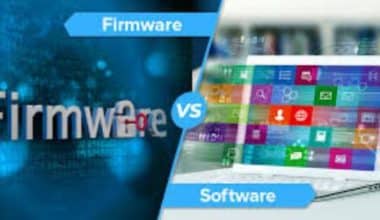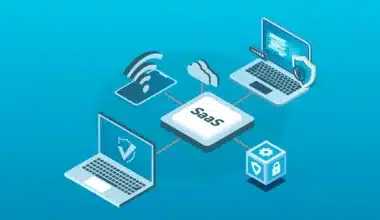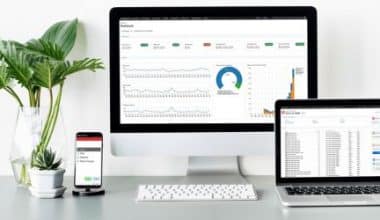We live in a tech-driven world where it is impossible to survive without mobile and web applications. Today, almost everything is digitized from education to bank transactions and flight bookings, thanks to efficient frameworks that offer seamless user experience. One such framework that has emerged as a reliable solution for front-end development is React. This React tutorial will give you the basics on how to use React for front-end developers.
What Is React?
Before we dive into this ReactJS tutorial, we need to define what React is. React remains one of the most popular front-end JavaScript libraries in the area of web development. Created to support building fast and interactive user interfaces for mobile and web applications, React is open-sourced, meaning that users have the right to study, change, or distribute the software. The front-end library is also component-based and is only responsible for the view layer of an application.
In any React tutorial for beginners, it is important to note that ReactJS can be used for the creation of dynamic applications and allows developers to create sizeable applications with intricate user interfaces by integrating small and isolated components. While often referred to as a framework because of the capabilities and behaviour concerning generating full-fledged applications, React is essentially a library. This means that it needs more libraries to produce complex solutions.
In essence, React is a highly popular front-end JavaScript library used in the field of web and app development. Maintained by Facebook and a robust community of developers, React is used by a large group of renowned companies, including Instagram and Netflix for the generation of UI and UI components. If you find yourself struggling, consider getting professional python assignment help online.
Why Learn React?

For this React JS tutorial for beginners, it is important to note that the main objective of using ReactJs is to facilitate the development of user interfaces that improve speed and performance. A notable feature of React is JSX, which is an extension of the library and is very easy to use. There are also components similar to pure JavaScript functions which help processes by simplifying code. Components separate the functionality into reusable and independent code. There are also virtual DOM and JavaScript expressions.
One of the main reasons why it makes sense to learn ReactJS for beginners is its popularity. As a developer, you will likely need to work with React at some stage in your professional life. The tool is fast growing in popularity. You may need to use the library as part of an existing project or a team you work with will ask you to work on a new app based on React. You need to prepare yourself with the skills needed for when the time comes. Remember, a lot of tooling today is generated with React as the core.
It also makes sense to learn the React JS tutorial if you are a front-end developer. It will look good and attractive on your resume. Employers these days prefer developers who have some knowledge and experience using React, and the library may likely come up during your interview. To be prepared, you need to learn how to use React.
ReactJS is popular because it uses a virtual DOM, which uses an in-memory data structure. This ensures that only the most recent modifications are updated in your browser’s DOM. In the end, your application will benefit from faster speeds. By using the React component feature, you will be able to design the components of your choosing, which are reusable and important for the maintenance of your code.
Useful Tips for Learning to Use ReactJS
Over recent years, there has been a growing demand for cross-platform mobile applications, with getting started with React JS emerging as a top solution for developers to grow their skills and abilities. Here are a few tips to help you as you learn React.
Grasp the Essence of ReactJS
Before you dive into the specifics of React JS learning, you need to start by understanding the fundamentals of the library. You need to grasp the foundations of the tool, including component-driven architecture, virtual DOM, and UI elements. Please understand that ReactJS is not a framework. Instead, it should be understood as a declarative, flexible, and efficient JavaScript used for building user interfaces. Unlike a framework that requires you to code everything in a specific way, React doesn’t have everything you need to create an application. You will need to use other libraries to complete your work. Unlike frameworks, libraries like React are more flexible.
Focus on Performance
If you are wondering how to learn React, remember that performance is important. Generally, web and mobile applications that work on both IOS and Android platforms receive flack when it comes to being seen as lesser than regular applications. However, one of the best things about React is that it is amazing when it comes to performance. Of course, the applications created using React are the outcome of natively written code. This means that they can be used on IOS and Android. However, they perform exceptionally well on both platforms.
Learn to Create the Development Environment
What makes this the React best tutorial is that it tells you that you need to learn about the process of creating an optimal environment for development. This is crucial for streamlining your ReactJS journey. You can start by creating Node.js before choosing between npm and Yarn as the ideal package manager. Once you have created the right development environment, start initiating your first project.
Learn to Use Props in ReactJS
Remember that ReactJS is a component-based library, meaning that the user interface is divided into small and reusable elements. All the components may need to share data in certain scenarios, passing data between them is what is done through props. The idea of props signifies properties and is used for sharing data between components. To implement props in ReactJS, start by defining attributes and their values. You will then pass it to child components or the components using the props. Lastly, you will render the props data. The point here is that to fully benefit from the functionalities, you need to ask yourself the question, how does React work?
The Bottom Line
This article covers what is React coding and offers a few insights on how to learn to use React JS. Learning to use is one of the best things you can do as a budding developer. It promotes several web development practices, including component-driven development and reusability. ReactJS is fast, light, and useful for tons of common scenarios. The fact that the library of ReactJS is managed by Facebook means that it is well maintained and updated. It can be efficient for the creation of sophisticated user interfaces for mobile and desktop application.






